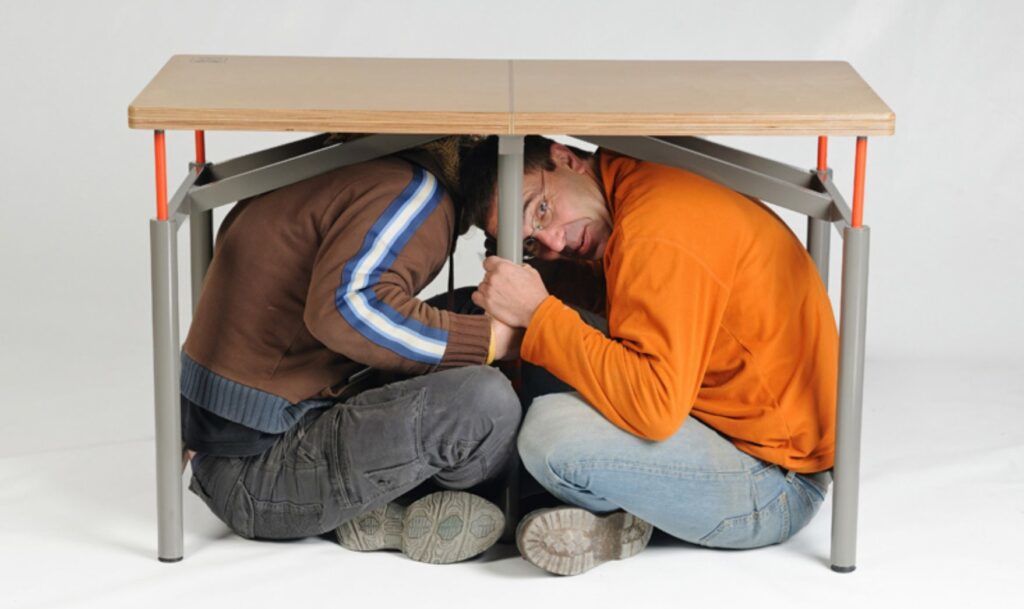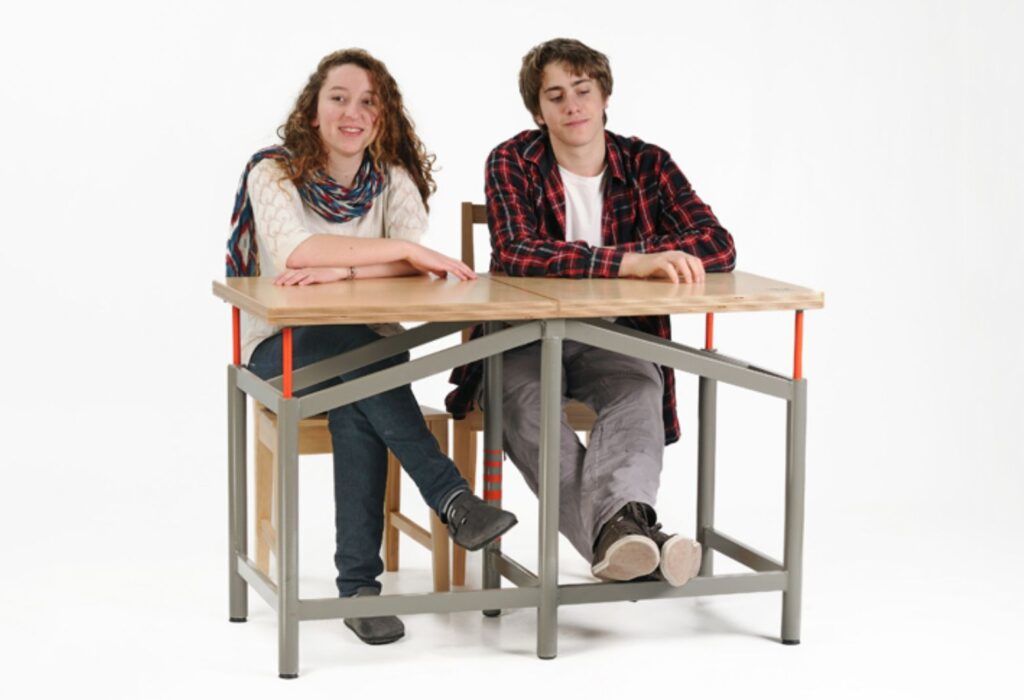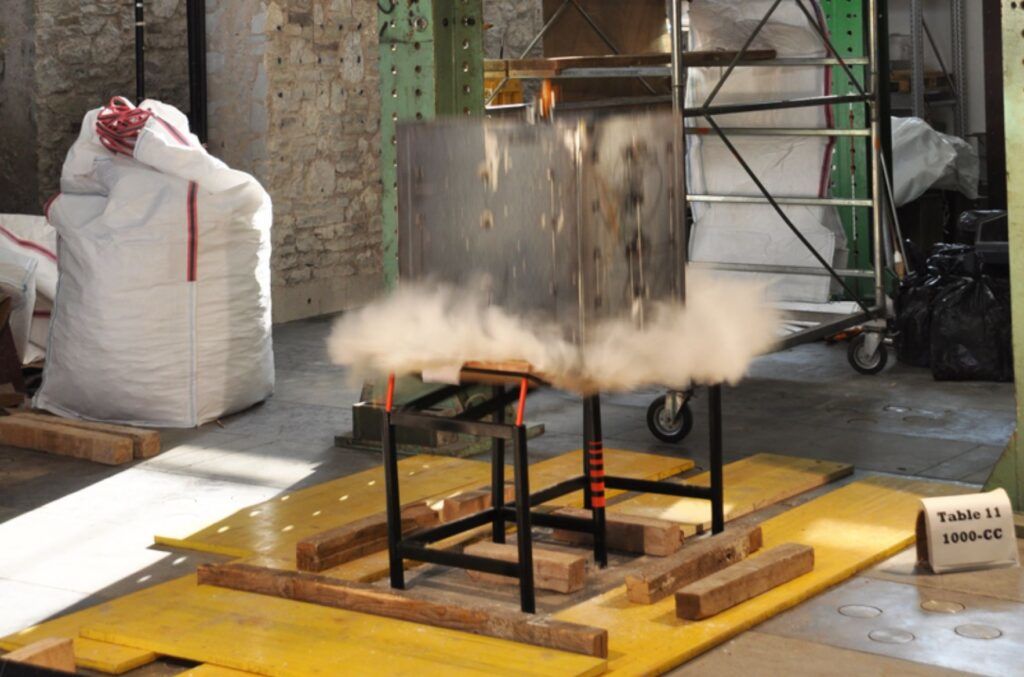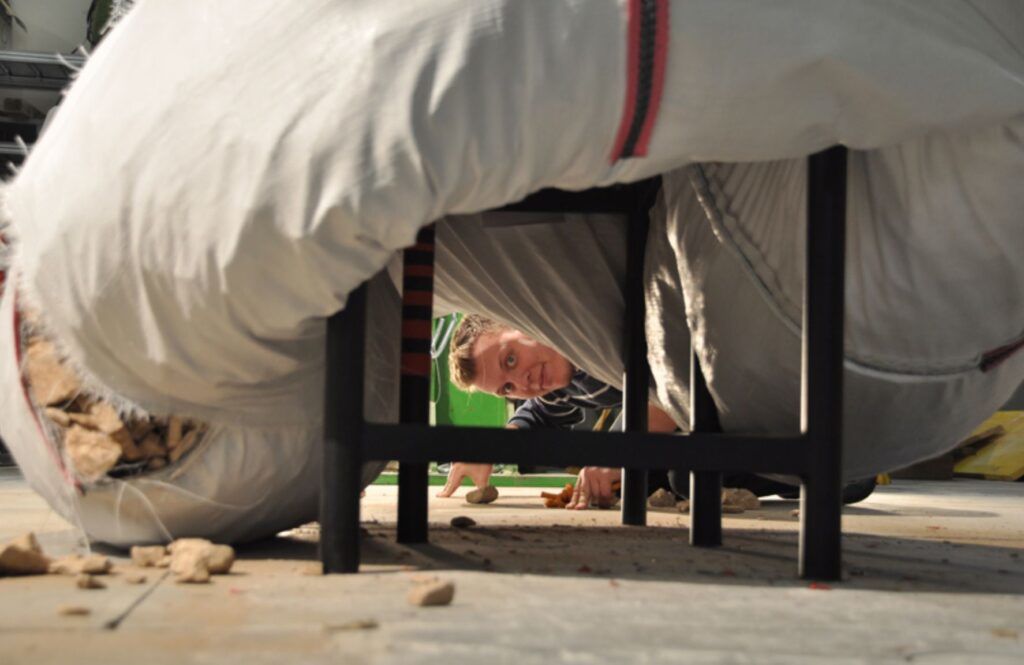Really Robust: Earthquake-Proof Desk Survives Smash Tests

It is one thing to have a great theoretical design concept – say, a table or desk that might save your life in an earthquake or other building collapse – and another to build and test a real-life prototype. A student and professor pair, Arthur Brutter and Ido Bruno, started with the classic advice of hiding under one’s school desk in an earthquake, but asked how safe a proposition this really is. Their earthquake-proof desk is up to the task of protecting students in an emergency, and it’s affordable for schools, too.

To see how their own variant would work, they dropped a thousand-kilogram weight on it – sure enough, it deformed but did not break, effectively protecting the person stowed away beneath it. It’s made of wood and steel tubes.

The desk weighs just 57 pounds, so it’s light enough for two students to carry, and costs just $35 per student. Brutter came up with the idea as part of his senior project at the Bezalel Academy of Arts and Design in Jerusalem, and worked with his professor of industrial design, Ido Bruno, to bring it to life.
Obviously, better earthquake-resistant buildings would be preferable to digging students and their ultra-strong desks out of a pile of rubble. But as a short-term solution, it certainly seems like they could save lives.

More from the Museum of Modern Art
“According to the designers, over three hundred million students across the globe are endangered daily because many schools in earthquake-prone areas are not structurally sound enough to absorb the impact of an earthquake. While students are often instructed to sit beneath tables or desks in case of an earthquake, current classroom furniture can trap or fatally crush children. The EPT, on the other hand, can tolerate diverse ‘collapse scenarios.’ It can be used for both shelter and protection during an earthquake and after: when lined up end to end, several tables create a ‘tunnel,’ allowing safe passage out of an unsafe buildings and access for rescue teams. The table can be used for most everyday classroom activities, and it is lightweight: two children can pick it up and move it on their own.”




